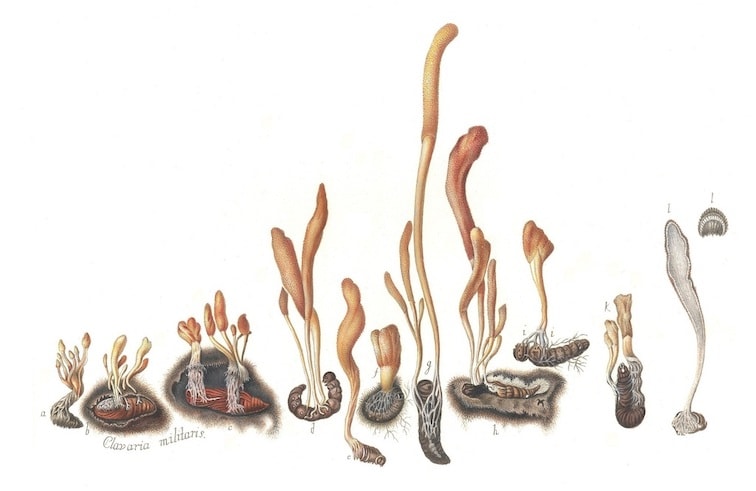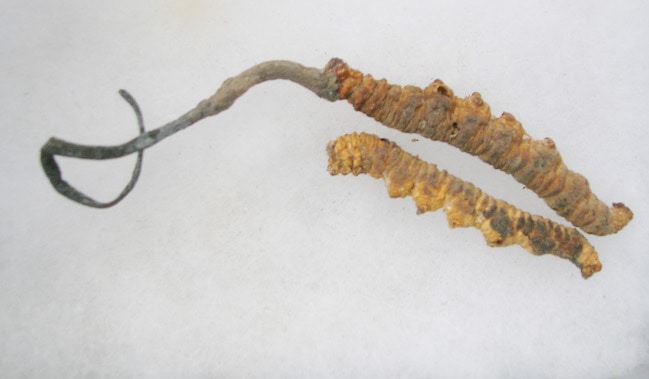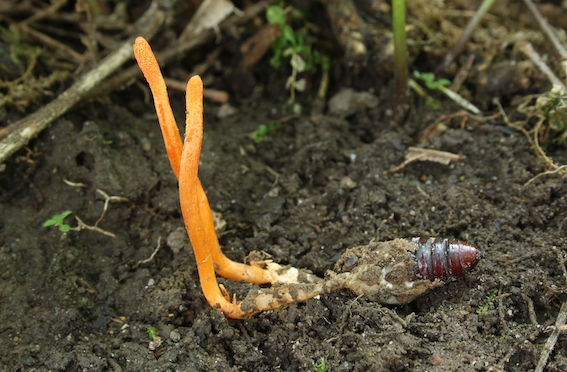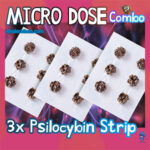What Are Cordyceps?
And, as there is so much to be said about each one, we have decided to put our favorite superfood superstars under the spotlight, so you can really get to know them. We’ve already tackled Lion’s Mane, Reishi, Turkey Tail, Shiitake and Chaga, but now it’s time for another fungi…
Today, we are looking at cordyceps! A parasitic fungus used for centuries in Asian medicine, which today is worth, as they say, more than its weight in gold. That’s despite the really rather unnerving growing process it boasts. In fact, as good as they may be for humans, the life-cycle of a cordyceps fungi reads like a horror movie — if you are a bug. Luckily, few bugs read. So, let’s shine that spotlight on: cordyceps fungus: how they get here, and what they could be good for…
Ophiocordyceps sinesis
The term ‘cordyceps’ actually covers a genus of fungi that contains over 600 different species. The name itself derives from Greek. It translates to ‘club head.’ Most species originate from Asia and favor humid and mild tropical forests. When people refer to ‘cordyceps’ in a health supplement or food context, they are referring to Ophiocordyceps sinensis, or to Cordyceps militaris. (Which is often sold as a cheaper substitute for the former.)

The Ophiocordyceps sinensis (which we will just refer to as ‘cordyceps’ from now on) grows across the Tibetan Plateau and the Himalayas. The way it grows is by parasitizing the larvae of ghost moths that live under the ground as caterpillars. In the summer, when the larvae go underground to hibernate, the cordycep fungus releases tiny spores which infect their bodies. Then, in suitably grizzly fashion, the fungus slowly kills the caterpillar by eating it alive. It mummifies it in a vertical position underground. Come springtime, the fungus bursts through the head of the poor caterpillar and into the sunlight. This is when it can be harvested. Its Tibetan name yartsa gunbu translates as “summer grass, winter worm.’’ How nice!

Why Are Cordyceps So Popular?
So, why do people so ardently desire these freaky fungus-caterpillar hybrids? (Yep — they are not considered as valuable if the fungus becomes detached from its caterpillar host on harvesting!)

Well, the reasons are manifold. Like many mushrooms that the west is only just opening their eyes to, the cordyceps has been used in Asian medicine for centuries. Its uses vary from a diabetes treatment, to a libido enhancer, to fabled anti-aging effects. A mixture of this ancient knowledge, coupled with fascinating new research has propelled the cordyceps to its much-prized position today. We check out its most promising uses, based on scientific research.
Anti-Aging & Libido Boosting
Cordyceps have been feted for many years in China and other parts of Asia, as an anti-aging and libido-boosting treatment. In more recent studies performed on mice, this has been found to hold up. In various studies for memory and learning the performance of the mice improved when cordycep extract was administered. These studies found that cordyceps increased the mice’s levels of antioxidants. These are molecules that fight cell damage which contributes to disease and aging. One study found that mice given cordyceps lived several months longer than those given a placebo, heavily supporting the anti-aging hypothesis. However, as of yet no studies have been carried out on humans.
As for the libido boosting properties, apart from vast anecdotal evidence and the cheeky nickname ‘Himalayan Viagra’, studies have evidenced this too. One study found that extract of cordycep improved the sexual ability of castrated rats. (We believe it — but we don’t wanna know how they found that one out!)
Improves Athletic Performance
In 1993 cordyceps hit the headlines as the secret behind the record-shattering performances of runners at the Chinese National Games in Beijing. Among the stunning achievements was runner Wang Jungxia who beat the 10,000m world record by 42 seconds. This record would not be bested for another 23 years! This story is often trotted out when talking about the athletic benefits of cordyceps. And maybe they did have an effect — but it’s good to also include in this story that many runners on the team would later fail drug tests…

But anyway, regardless of the mythology… Real science has recently shown that cordyceps can have an effect on athletic capability. Somewhat ironically however, they are not as effective if you are already a trained athlete. Studies using cordycep extract have shown increased exercise performance in various groups including older patients, as measured by improved respiratory and metabolic function. This means that the stamina for exercise is increased, so one can carry on for longer.
In a study of athletes this effect was not achieved however, with there respiratory abilities found to be no different. The reason for this, the researchers hypothesized, was that athletes are already at their maximum potential capacity and ability. Therefore the same relative improvement is not possible. Great for all us non-athletes out here though!
Additionally, many animal studies have found that cordycep extract can delay feelings of tiredness and increase stamina for physical activity. All is not lost for those pro athletes though! Scientists also hypothesize that the antioxidant properties could certainly be a boon for athletes post exercise.
Cancer Treating Abilities
Cordyceps have also generated interest due to their cancer treating potential. The secret lies in their seeming ability to inhibit the growth of tumors and cancer cells, including those associated with lung, skin, liver and colon cancer in humans. Mice studies have also shown that cordyceps can have anti-tumour effects on lung cancer, melanoma and lymphoma.

Additionally, test tube and animal studies have found that cordyceps have the ability to treat side-effects associated with traditional cancer treatments, such as leukopenia.
A Treatment For Type-2 Diabetes
Cordyceps has been used as a treatment for diabetes in traditional Chinese medicine for a long time. Supporting this, recent studies have shown that cordyceps may help keep blood sugar levels in check by mimicking the activities of insulin. They have also been linked to protection against kidney disease, which is often a consequence of living with diabetes.
Reduces High Blood Pressure
The powerful anti-inflammatory and antioxidant properties of cordyceps may help to treat hypertension (or high blood pressure.) This is attributed to a compound called cordycepin, similar in molecular structure to adenosine, which is found in the human body. Both of these compounds seem able to improve circulation and lower blood pressure by relaxing blood vessels. These relaxing effects appear to extend to the respiratory tract, reducing airway constriction, and therefore being a potential treatment for asthma sufferers.

How To Take Cordyceps
So there you have it! These creepy fungi that grow like fingers from the heads of unsuspecting bugs may be just the ticket to help you with a whole range of ailments! Cordyceps can be taken as a supplement, which is usually a synthetic version of the fungi called Cordyceps CS-4. If you are consuming them fresh (and this is likely to be cordyceps militaris rather than sinesis, due to the crazy price tag!) you can infuse them as a tea just like you would with magic mushrooms or truffles — but without the trippy effects.

Finally, make sure you always check with your doctor before adding something to your wellness regime — do not use these a replacement for medicine, rather as an accompaniment.





